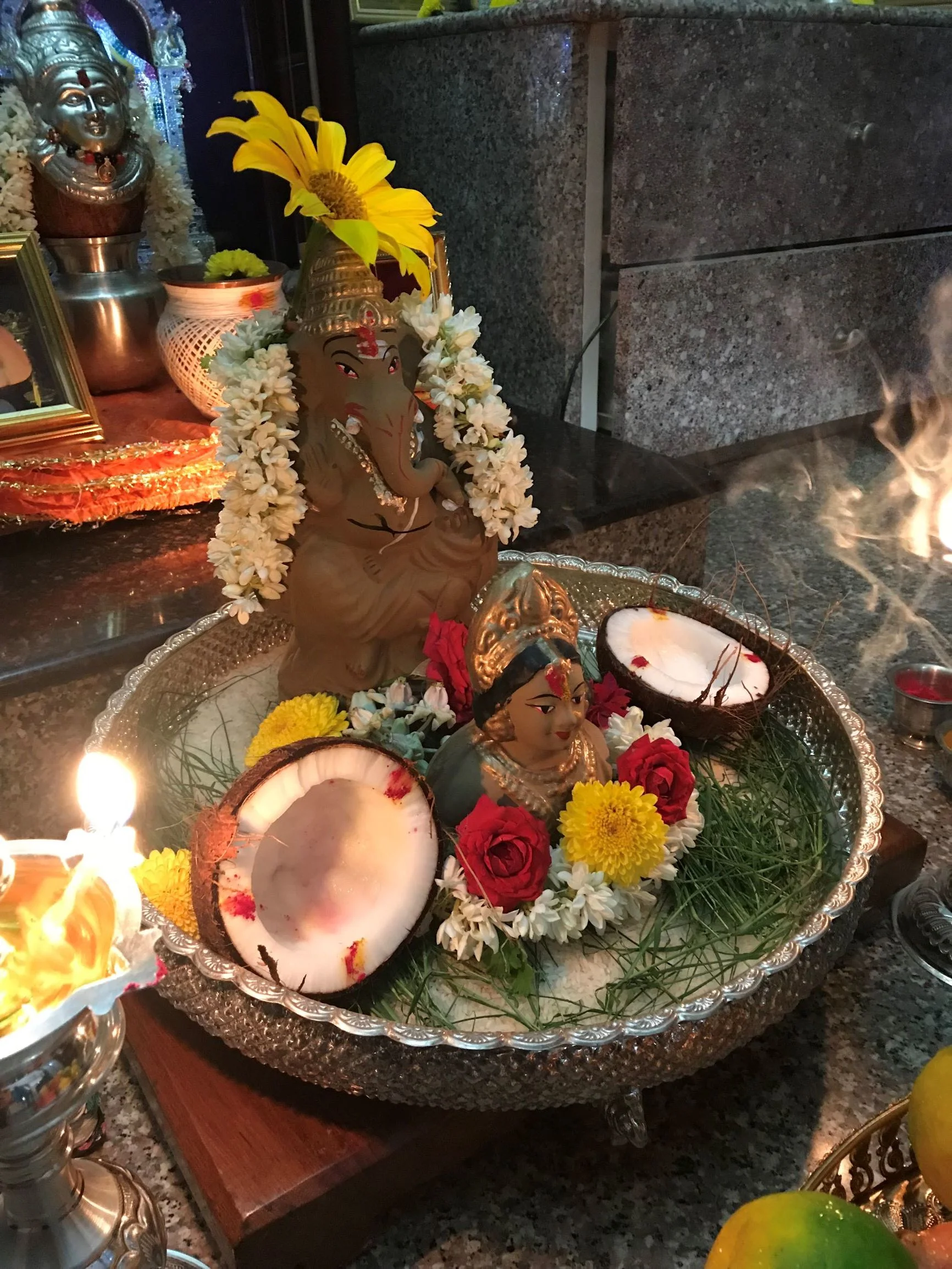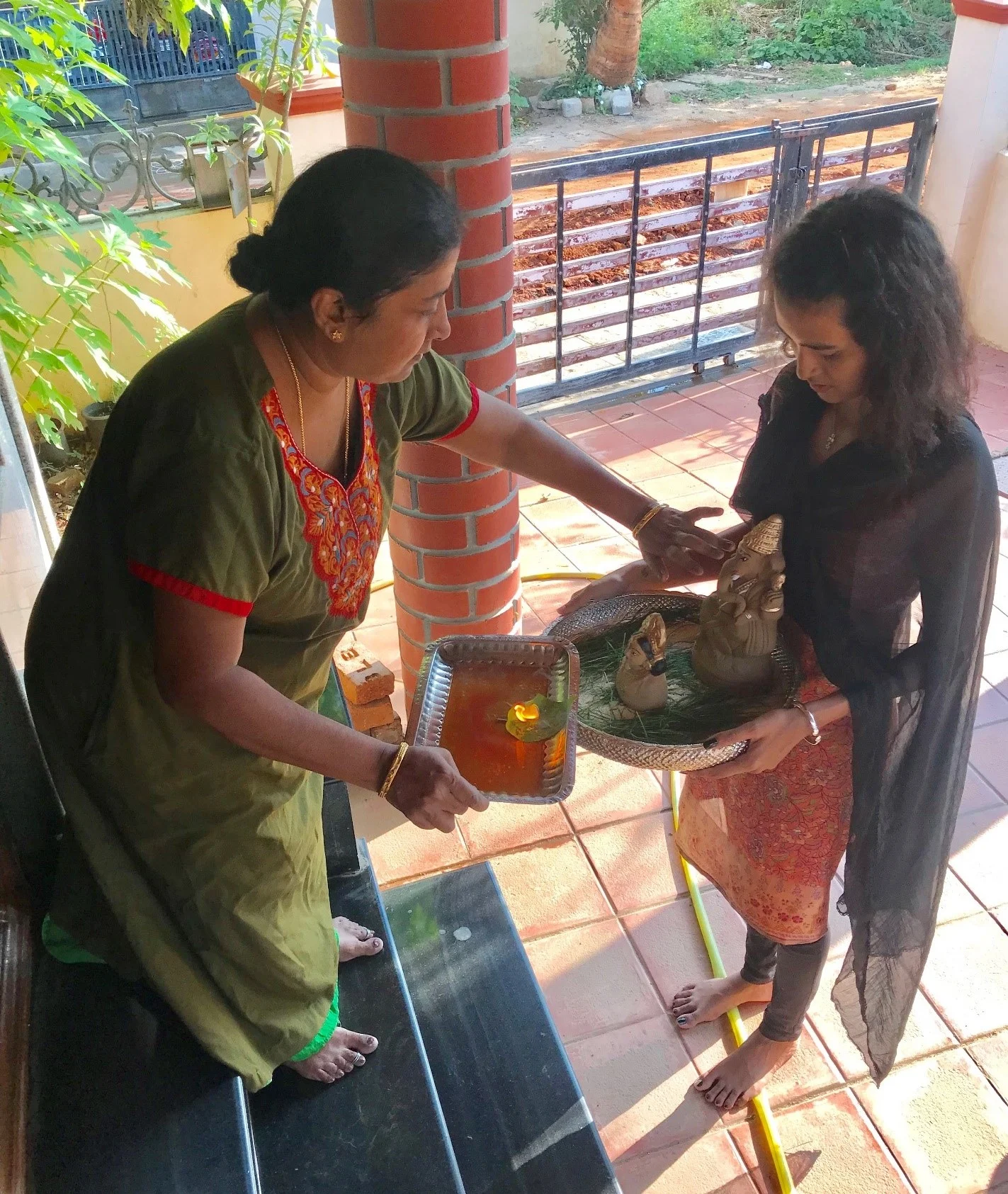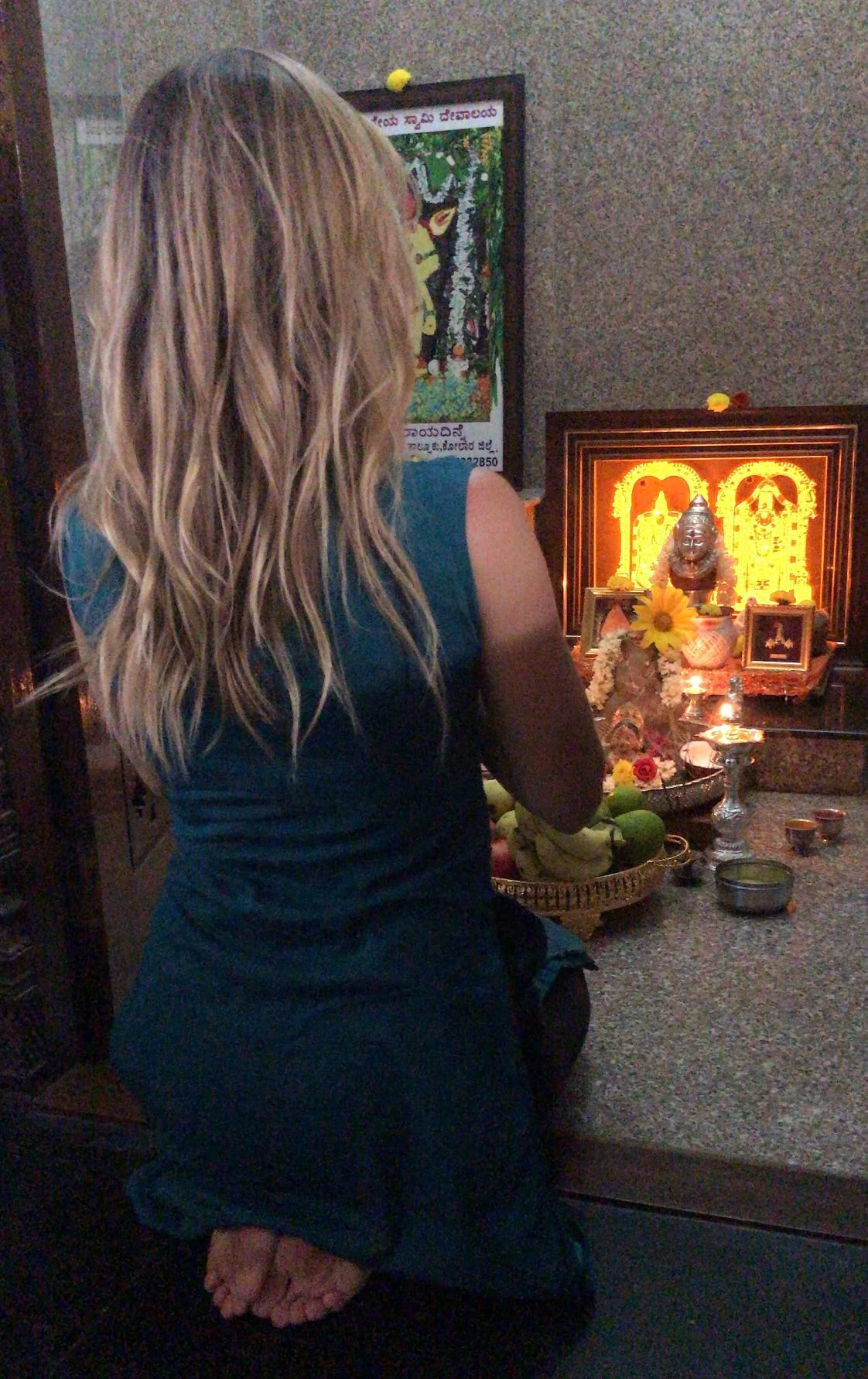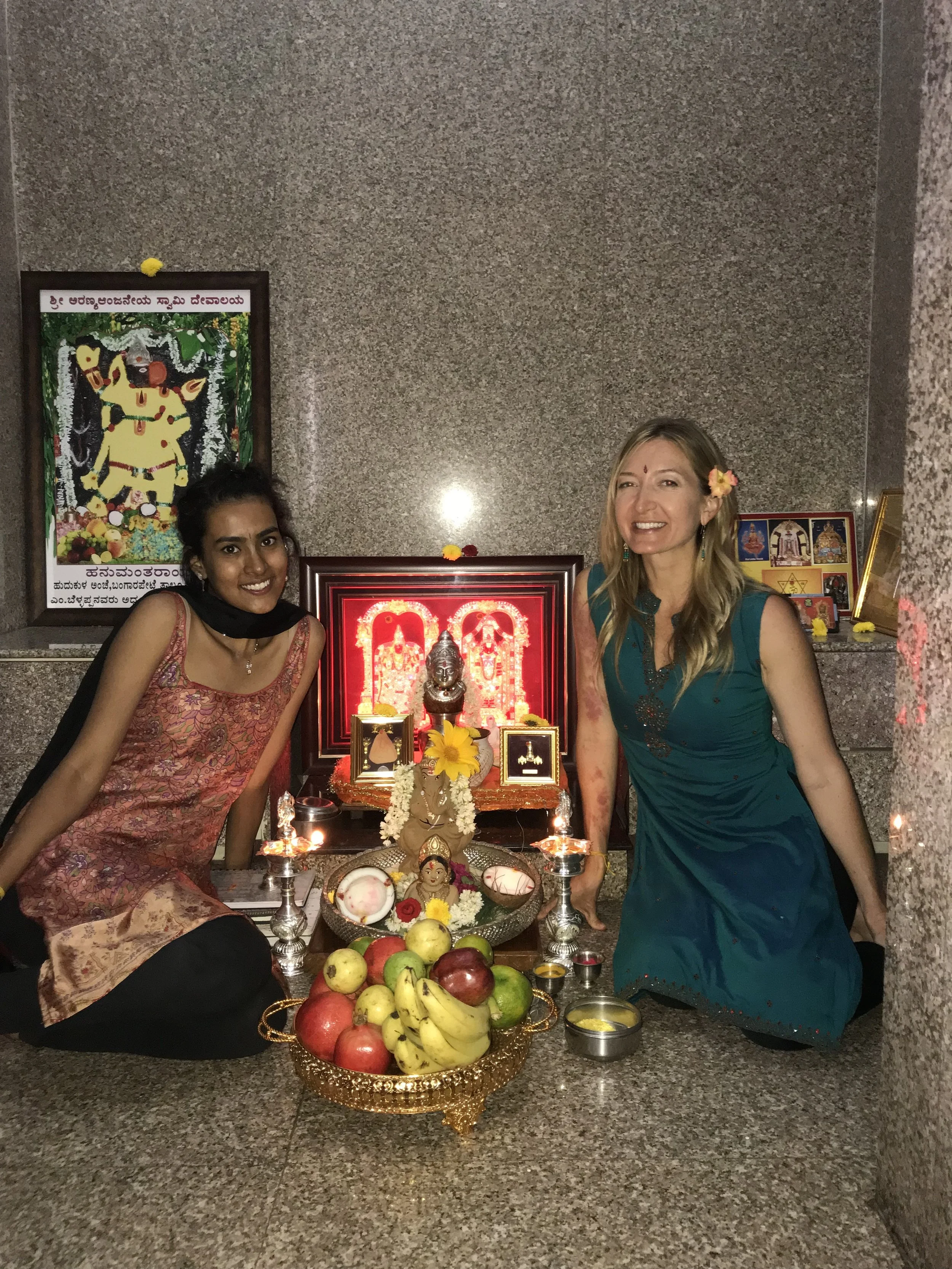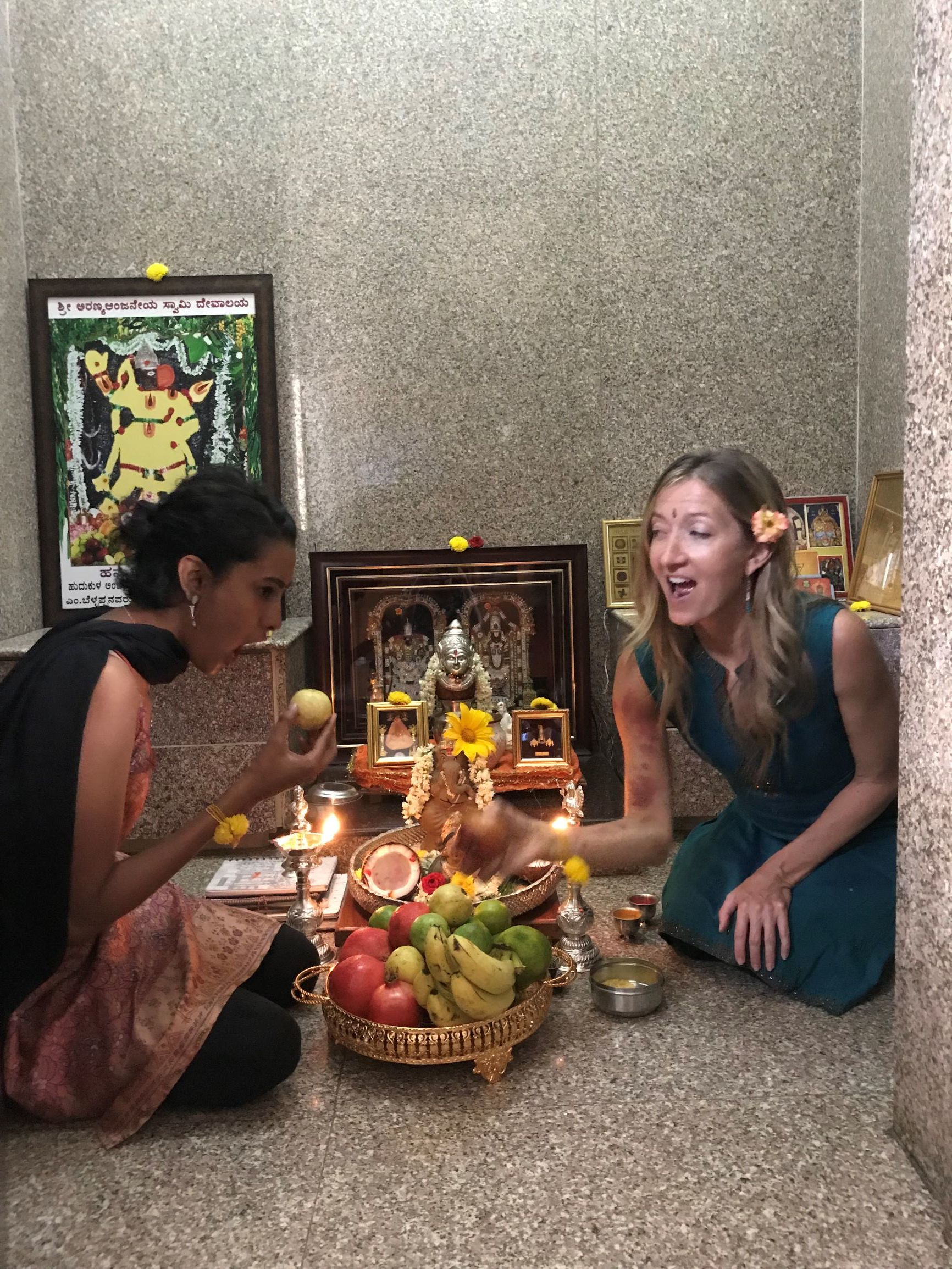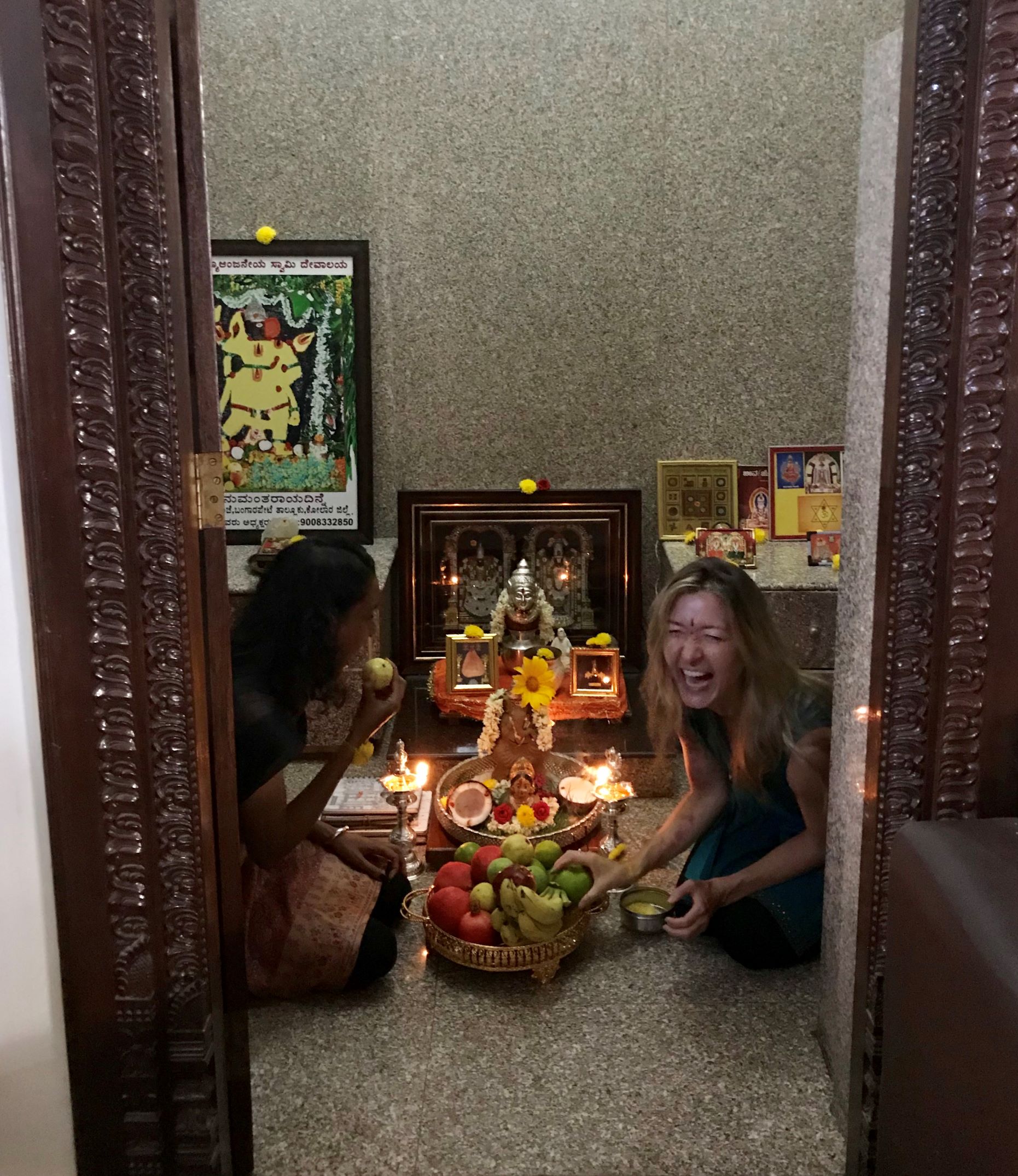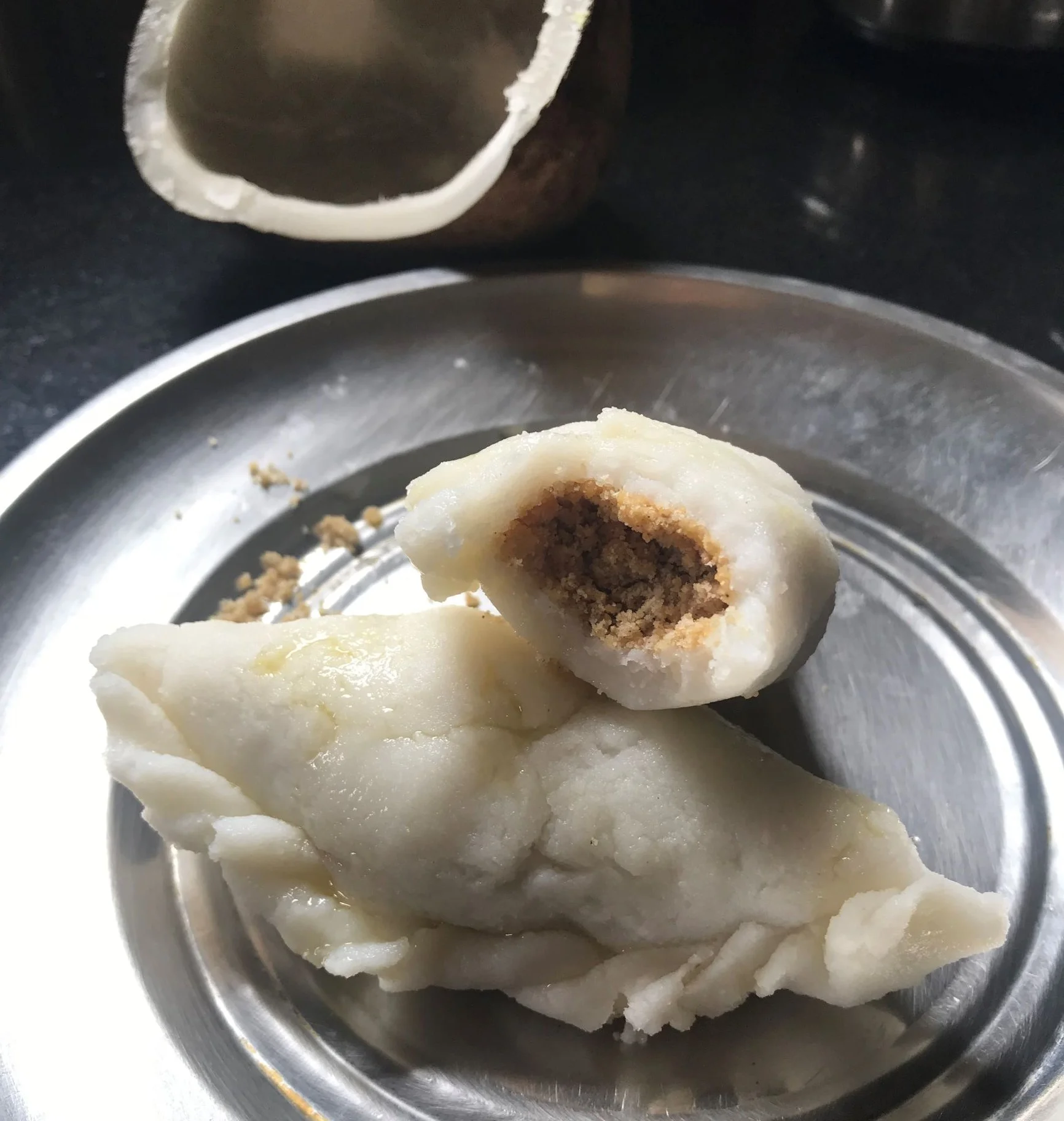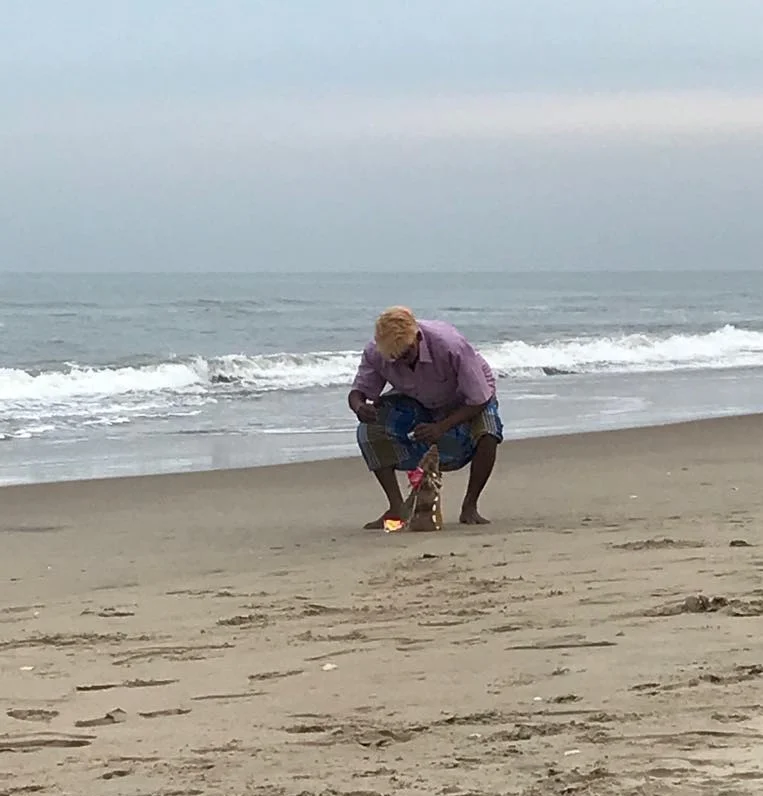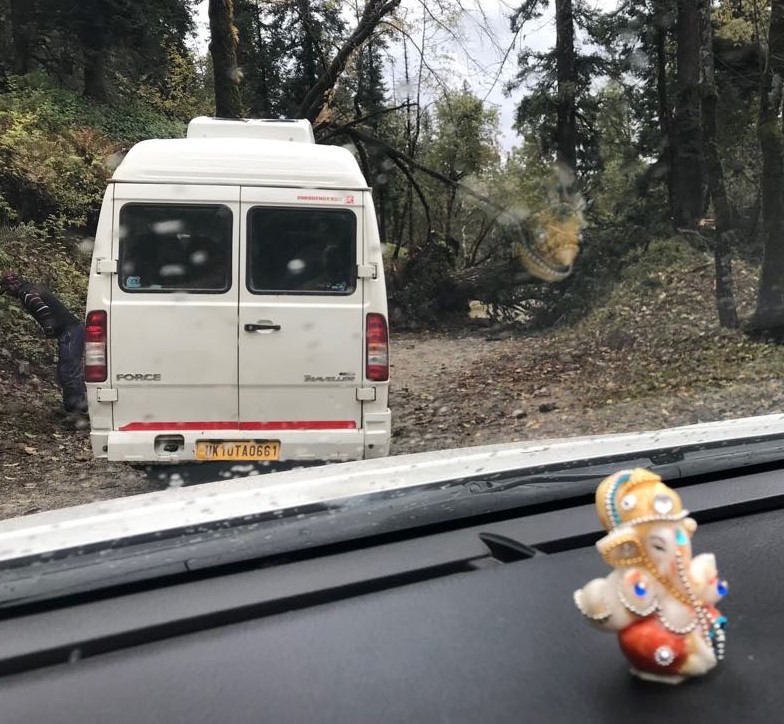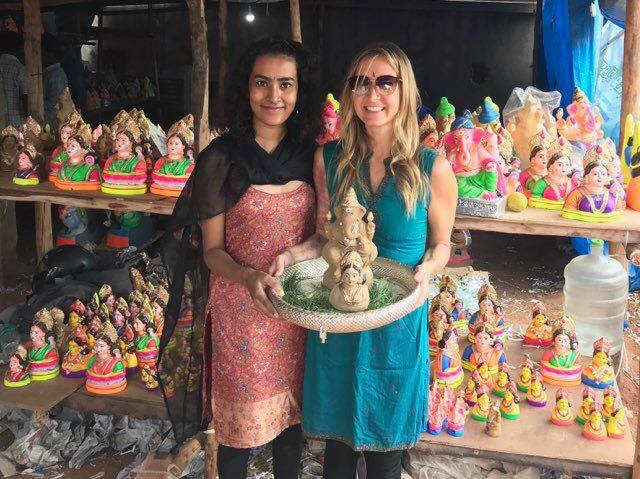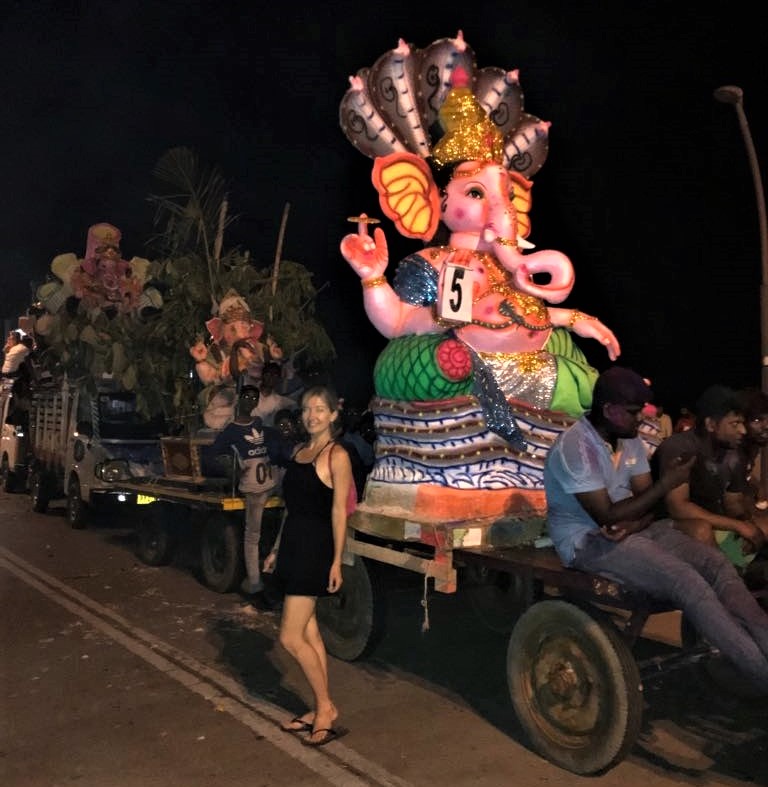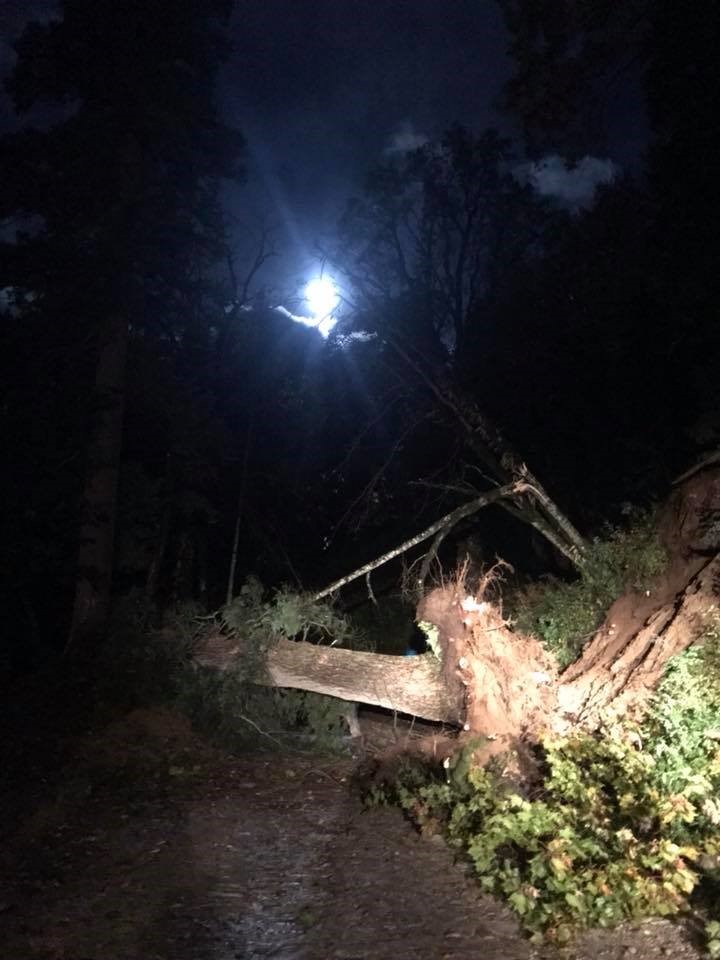Celebrating Ganesha
My return to India in September coincided auspiciously with the national Festival of Ganesha. Unforgettable elephant-headed Ganesha, the remover of obstacles; one of the best-known and most easily recognizable Hindu deities. India celebrates many festivals in honor of many deities, but this celebration of Ganesha’s birthday – Ganesh Chaturthi – is one of the largest and most important.
The timing wasn’t planned – I learned about the festival from my Bangalorian friend Nesha when she picked me up at Bangalore airport. Naturally, I was excited by the news. I love anything with “festival” in its name, and I was also delighted at the chance to absorb more knowledge of the colorful, complex and fascinating Hindu traditions.
I’m far from an expert on the topic of Hindu mythology, which includes an extravagant number of gods, goddesses and legends, but a few months earlier I learned an enlightening detail: Hindu deities are considered by many Hindus to be expressions of the many different aspects of the one God. They’re not meant to be taken literally. They exist as poetic, allegorical symbols to bring us to a deeper understanding of God. Of nature, of existence, of the Universe.
As Nesha’s mother told her, “There is one God and you name it whatever you want, but there is one God.”
To me, that’s beautiful.
Nesha tells me there are many ways of celebrating Ganesh Chaturthi across India, but her family has their own tradition. It begins first thing in the morning my 2nd day in India, before breakfast. She lends me a beautiful embroidered blue kurti to wear for the day and applies a peacock bindi between my eyebrows. When she offers me the bindi, I hesitate. Just a few days prior I listened to a podcast that informed me it would be “cultural appropriation” for me, as an non-Hindu, non-Indian, to wear a bindi. Not wanting to accidentally offend or disrespect anyone, I explain my hesitation to my Indian friend. She looks at me with raised eyebrows. She’s never heard of cultural appropriation and finds nothing disrespectful in me wearing the bindi, especially here in Bangalore on this festival day. It’s a part of her culture and she wants to share it with me. “It symbolizes opening your third eye,” she adds.
That resolved, the bindi is applied and we continue with our day. We drive to a small roadside store where many Ganesha statues of varying sizes are available for sale. They’re sand colored, made of baked clay, and painted with touches of bright color. We come prepared with a silver tray lined with sprigs of fresh green sage. Nesha carefully places her chosen Ganesha on the tray and carries him back to the car. As a sign of respect, she’s barefoot.
Upon arrival back at the house, Nesha’s mother, Aruna, performs aarti for Ganesha, circling flaming camphor clockwise before him and then dotting his forehead with water. He is then brought to the puja room, where Aruna drapes a garland of flowers around his neck and tucks a large yellow flower behind one ear. She places a smaller statue of Gowri (one of the manifestations of Parvati, wife of Shiva) on the tray in front of Ganesha and continues decorating the tray with two coconut halves and more flowers. Two tall silver candle holders are placed next to the tray and their candles lit with cotton wicks dipped in ghee. A gold tray laden with fruit is placed in front of the two statues as an offering. We set a stack of notebooks next to the tray, symbolizing a request for removal of obstacles to learning and knowledge.
As a blessing we throw grains of a dried rice-like substance called akshatey onto the tray, and then a prayer is chanted.
After the conclusion of the puja, we take a few photos to commemorate this auspicious occasion. Our silliness takes over and the camera captures us sneaking fruits off the platter, confident that Ganesha shares our sense of humor and will enjoy the joke with us.
Legend has it that Ganesha’s favorite sweets are steamed dumplings called kadubu (also known as modukh in some parts of the country). Nesha’s mom, who happens to be a fabulous cook, has prepared a large batch of these in his honor. The rice patties are stuffed with a sweet filling of ground nut powder, coconut powder and jaggery. They’re delicious; it’s easy to understand why Ganesha loves them. I find it impossible to eat just one.
The tradition ends that night. We bow to pay our final respects to Ganesha and thank him for his blessings, and then both Ganesha and Gowri Maa are symbolically cleansed with prayer, incense and lighting of camphor. Finally the Gowri statue is placed in a bucket of water, followed by Ganesha, where the clay will dissolve, symbolically sending both back home.
I learn that Ganesh Chaturthi, a festival of joy, abundance and prosperity – all those things that result when obstacles dissolve – lasts for 21 days, and is celebrated for varying durations throughout the country, sometimes for 2, 3, 9 or 12 days. In the following days we encounter more aspects of its festivities. A few days later in Pondicherry, while relaxing on a quiet beach just before sunset, I pull out my notebook and announce, “I’m going to write about Ganesha.”
“Speaking of Ganesha, look,” Nesha replies, gesturing toward my right. I turn to look and see a yellow-haired older man in a collared shirt and lungi standing on the stand, holding a Ganesha statue.
“He’s sending him home,” she says.
Struck by the serendipity of the timing, I watch as he places his Ganesha on the sand and kneels to light a piece of camphor on a betel leaf. He places the flickering flame on the sand at Ganesha’s feet and stands for a while with eyes closed and palms together in front of his heart. He appears oblivious to the handful of beachgoers sharing the beach with him. Something about the quiet simplicity of this solitary man’s observance of his tradition touches me.
We continue silently watching him. After finishing his prayers, he kneels to pick up Ganesha and blow out the flame. He hikes his lungi above his knees and knots it, then wades knee deep into the ocean. He stands in the waves for a few moments and then gently tosses Ganesha into the water, symbolically sending him back home. The statue doesn’t resurface. Made of mud, it will eventually disentigrate and return to the elements.
As someone once wrote, “ritual connects us to the divine.” Watching him, I felt that spark of connection. Devotion is good for the heart. It reminds us life is sacred.
And it’s also fun, festive and full of surprises.
Later that night, driving through town to our favorite Pondi waterfront store, Aura Shoppe, we encountered a swarm of human and vehicle traffic and barriers blocking our way. We parked our motorbike and continued on foot to discover the reason for the road blockage: a Ganesha parade. Colorful, exuberantly decorated Ganeshas presided over a slowly moving line of individual floats, while music and drums completed the festive ambience. We oohed and aahed over the vibrant floats during our short walk to the store.
It turned out we arrived with perfect timing. Our quick shopping mission completed in a few minutes, we exited to find the road empty and fireworks overhead concluding the evening’s festivities.
Ganesha continued to reappear during the following weeks, a theme that wove itself like sparkling glints of silver into the thread of my journey through India. We found his image carved into the 8th century stone walls of the spectacular Hindu temple caves at Ellora.
A small plastic Ganesha on the dashboard of the Toyota Innova accompanied us on a 9 day tour of Spiti Valley and the remote Himalayas. The sight of this small Ganesha reassured me when one afternoon we found ourselves trapped on an isolated mountain road behind an enormous fallen pine tree,. Why worry when we have the remover of obstacles on our dashboard? It took six hours, but eventually that obstacle was removed for us by a JCB bulldozer. Six hours that passed by pleasantly enough with walks through the forest, a bonfire, a movie in Hindi, reading, meditation and seeing the full moon rise. Maybe that connection with nature was a blessing in disguise.
Ganesha became for me a recurring reminder that life is full of obstacles blocking the way to our dreams, but they’re not a reason to stop.
They’re just extra challenges to keep things interesting. If we keep moving forward, we’ll either find a way through or around them, or they’ll be removed for us. And very often it’s the latter, because that’s how life works. Just trust, and relax. In the words of Patanjali, Isvarapranidhana.
* * *
Above, left to right: Getting Ganesha in Bangalore; Ganesha parade in Pondicherry; Roadblock; Moonrise over the roadblock
Ganesha hand-carved into an 8th century stone wall of the Ellora cave temples.

